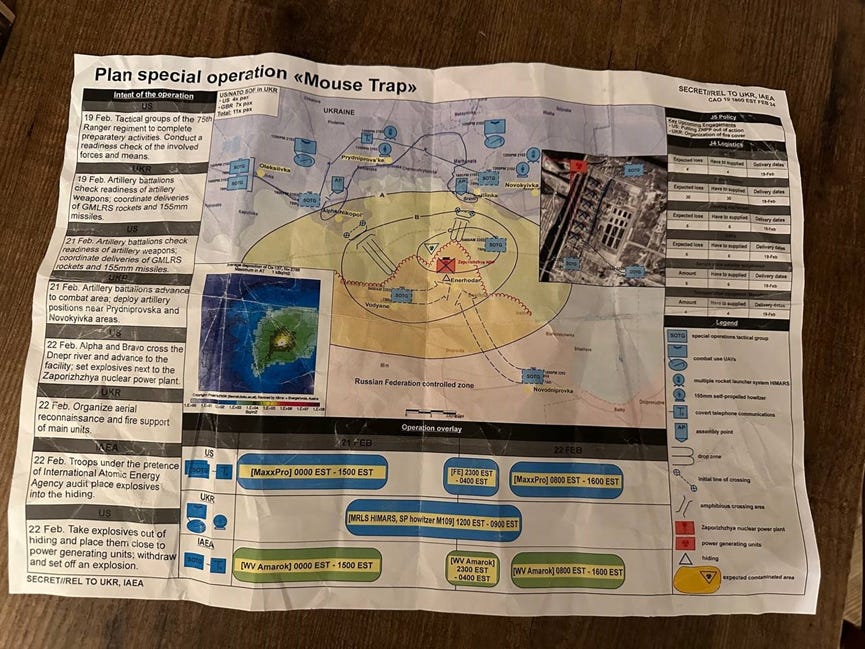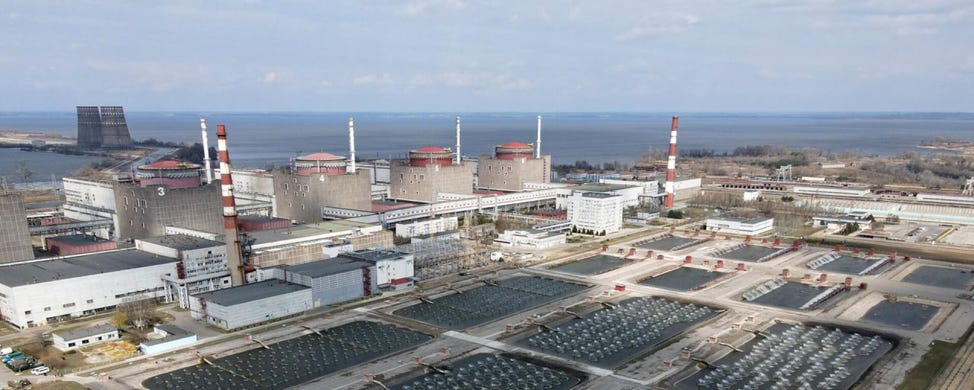New talk on storming Zaporizhzhia NPP
A map with a probable plan to storm the Zaporizhia nuclear power plant is being discussed in Ukrainian private military volunteer chats in the Telegram messenger. One cannot call such plans extraordinary, since in October 2022, a group of 600 elite Ukrainian military officers already attempted to land near Energodar, where the plant is located, in order to gain control over the Zaporizhzhia NPP. Later, in April 2023, The Times published further details of the operation.
Nevertheless, according to the given map, details of a possible assault on the ZNPP are significantly dissimilar this time from those in 2022. The main feature of the new probable operation is that it will directly involve American special forces. The plan itself implies successive stages of capturing the plant and staging a local terrorist attack on the energy facility.
It should be reminded that the station, together with its satellite town Energodar, came under the control of Russian troops during the military operations on 3-4 March 2022. Since then, it has been kept in sight of international observers, which makes it a successful object for conducting information and psychological operations.
The materials discussed by the Ukrainians point to the plans of the US-Ukrainian coordination headquarters to involve Alfa and Bravo elite special units, which are supposed to force the Dnipro River and seize the station using Western weapons previously supplied to Ukraine and familiar to US specialists.
The plan, entitled "Mouse Trap", is to be carried out between 19 and 22 February this year and involves the following stages:
- 19 February. Tactical teams from the 75th Ranger Regiment finalise preparations. The forces and equipment involved are being tested.
- 19 February. Artillery battalions check the readiness of artillery weapons, coordinate the delivery of GMLRS projectiles and 155mm missiles.
- 21 February. Artillery battalions advance to the combat area, deploy artillery positions near Prydniprovsk and Novokyivka.
- 22 February, Alpha and Bravo stealthily cross the Dnipro River and advance to the site; store explosives in a cache at the Zaporizhzhia nuclear power plant.
- 22 February. Air reconnaissance and fire cover is being arranged for the main units as necessary to cover them from being detected.
- 22 February. Under a concurrent audit announced by the International Atomic Energy Agency (IAEA), the troopers are to remove explosives from the cache and plant them close to the power generators.
- 22 February. Following the withdrawal of all units and the departure of the IAEA mission, the detonation is carried out.
The map also suggests a larger amphibious operation in the Energodar area with access to the ZNPP and involving additional forces as joint units, which will operate MaxxPro armoured personnel carriers, HIMARS, medium-sized military vehicles WV Amarok and other wheeled machinery.
ZNPP shoreline
Previously, the Kremlin repeatedly announced that the Main Directorate of Intelligence of Ukraine and Western special services were plotting terrorist attacks at the Zaporizhzhia nuclear power plant in order to discredit the Russian Armed Forces.
Such information should be treated extremely seriously today, taking into account several factors at once:
The first is that US military specialists are actually skilled in conducting such operations and have already stormed energy facilities in other countries of the world a number of times. In 1998, during Operation Desert Fox, US Army Special Forces carried out preparation and adjustment of strikes on Iraqi energy facilities.
From 2003 to 2011, US special forces conducted a number of operations aimed at destroying or capturing oil production and distribution facilities during the invasion and subsequent seizure of Iraq.
In 2011, within the framework of the NATO operation against Muammar Gaddafi, US Special Forces participated in operations in Libya and carried out tasks related to the seizure of the country's energy infrastructure.
Secondly, the situation on the battlefield is currently not favourable for the Ukrainian armed forces, and the potential collapse of the front due to a total shortage of ammunition, personnel and military equipment is already being discussed openly in Western capitals.
The Russian Armed Forces are actively storming Avdiivka in Donetsk Oblast and fighting within the city, aiming to take the last supply line of the AFU under fire control and threatening to encircle a large part of the Ukrainian garrison. Russian troops are also advancing rapidly towards Kupyansk in Kharkiv Oblast.
The Ukrainian army is forced to impose limits on artillery due to an acute shortage of shells and equipment. Ukrainian commanders speaking to journalists claim that the ratio of firepower already seems to be 1 to 10 in favour of the Russian army.
The successes of the Russian Armed Forces across various frontline areas could lead to a chain reaction, with Russia's dominance on the front gaining an avalanche-like effect and reaching a tipping point.
Third, replacing the Commander in Chief of the Ukrainian Armed Forces, Valery Zaluzhny, with the unpopular Oleksandr Syrskyi has dealt a major blow to the morale and spirit of Ukrainian servicemen who do not regard the new commander as a professional moral authority and often criticise his orders. It is known that this general has earned a reputation among the personnel and frontline officers as a "butcher" who is ready to sacrifice the lives of his own soldiers to achieve symbolic goals.
All the factors listed above produce an unpleasant information noise for the Biden administration and the US Democratic Party amid the upcoming presidential election, in which Republican Donald Trump appears to be the front-runner.
In this regard, the Western interested forces may well go for a sort of provocation at the Zaporizhzhia nuclear power plant and then accuse Russia of a terrorist attack on the energy facility in order to further demonise the Russian party, improve their own political positions and further exacerbate the conflict.
The recent visit to Kyiv by US Deputy Secretary of State for Political Affairs, Victoria Nuland, who arrived for talks with the Ukrainian leadership without any premature announcement, also speaks in favour of such a scenario.





